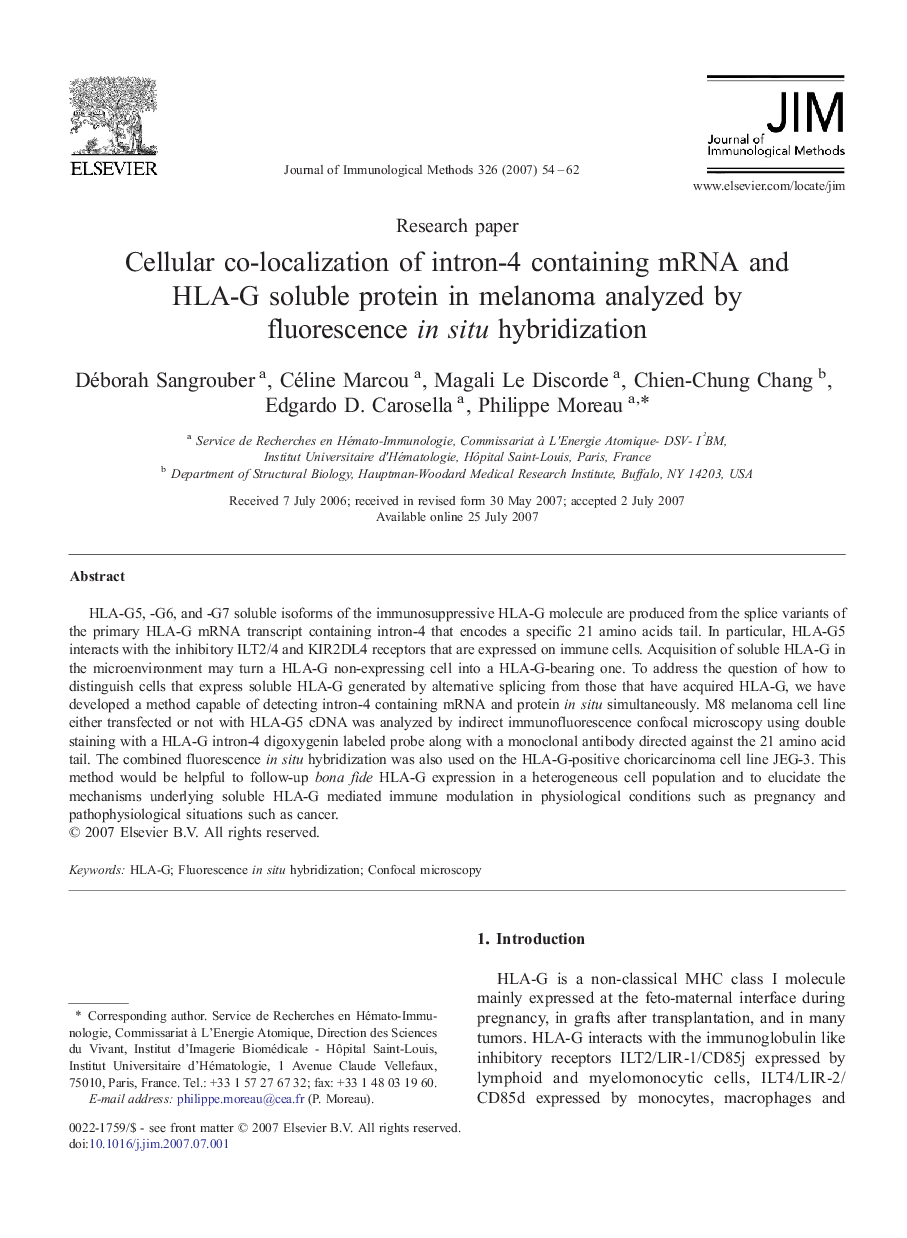| Article ID | Journal | Published Year | Pages | File Type |
|---|---|---|---|---|
| 2089419 | Journal of Immunological Methods | 2007 | 9 Pages |
HLA-G5, -G6, and -G7 soluble isoforms of the immunosuppressive HLA-G molecule are produced from the splice variants of the primary HLA-G mRNA transcript containing intron-4 that encodes a specific 21 amino acids tail. In particular, HLA-G5 interacts with the inhibitory ILT2/4 and KIR2DL4 receptors that are expressed on immune cells. Acquisition of soluble HLA-G in the microenvironment may turn a HLA-G non-expressing cell into a HLA-G-bearing one. To address the question of how to distinguish cells that express soluble HLA-G generated by alternative splicing from those that have acquired HLA-G, we have developed a method capable of detecting intron-4 containing mRNA and protein in situ simultaneously. M8 melanoma cell line either transfected or not with HLA-G5 cDNA was analyzed by indirect immunofluorescence confocal microscopy using double staining with a HLA-G intron-4 digoxygenin labeled probe along with a monoclonal antibody directed against the 21 amino acid tail. The combined fluorescence in situ hybridization was also used on the HLA-G-positive choricarcinoma cell line JEG-3. This method would be helpful to follow-up bona fide HLA-G expression in a heterogeneous cell population and to elucidate the mechanisms underlying soluble HLA-G mediated immune modulation in physiological conditions such as pregnancy and pathophysiological situations such as cancer.
